
A-4E Skyhawk

The Skyhawk is a single seat subsonic carrier-capable attack aircraft developed for the United States Navy and United States Marine Corps in the early 1950s. The delta winged, single turbojet engine Skyhawk was designed and produced by Douglas Aircraft Company, and later by McDonnell Douglas. It was originally designated A4D under the U.S. Navy's pre-1962 designation system.
The Skyhawk is a relatively lightweight aircraft with a maximum takeoff weight of 24,500 pounds and has a top speed of more than 670 miles per hour. The aircraft's five hard points support a variety of missiles, bombs and other munitions. It was capable of carrying a bomb load equivalent to that of a World War II-era Boeing B-17 bomber, and could deliver nuclear weapons using a low-altitude bombing system and a "loft" delivery technique. The A-4 was originally powered by the Wright J65 turbojet engine; from the A-4E onwards, the Pratt & Whitney J52 was used.
Skyhawks were the U.S. Navy's primary light attack aircraft used over North Vietnam during the early years of the Vietnam War; they were later supplanted by the A-7 Corsair II in the U.S. Navy light attack role. Skyhawks carried out some of the first air strikes by the US during the conflict, and a Marine Skyhawk is believed to have dropped the last American bombs on the country. Notable naval aviators who flew the Skyhawk included Lieutenant Commanders Everett Alvarez, Jr., John McCain, and Commander James Stockdale. On 1 May 1967, a A-4C Skyhawk piloted by Lieutenant Commander Theodore R. Swartz of VA-76 aboard the carrier USS Bon Homme Richard, shot down a North Vietnamese Air Force MiG-17 with an unguided Zuni rocket as the Skyhawk's only air-to-air victory of the Vietnam War.
The Kit
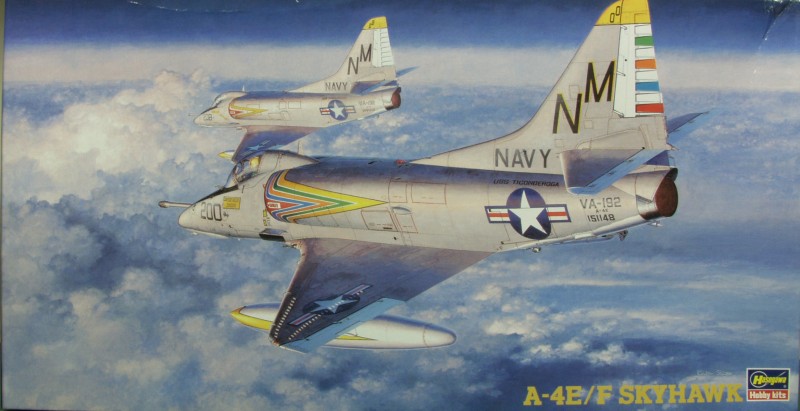
The Hasegawa kit comes in a top open tray type box made from thin but sturdy card stock and has the typical Hasegawa nice artwork on the cover. Inside all of the sprues are contained in a single bag with the clear parts being separately bagged. The parts are molded in a light gray. They have a glossy finish, are crisply molded and feature fine recessed panel lines and fastener detail. The panel lines are so light that going heavy with paint may cover them. Raised detail is also present where applicable. The parts are mostly flash free. I did not find any surface defects on any of the air frame parts apart from some light scuffing due to the sprues all being bagged together. There is a light amount of mold parting lines on parts like the landing gear but these should be easy to clean up.
Detail wise the surface has a lot of nice molded in detail. The side walls of the cockpit have a diamond pattern cross hatch simulating the insulation installed there. All of the control surfaces are molded in the neutral position with the exception of the flaps, slats and speed brakes. The flaps and speed brakes can be positioned open or closed and I assume the slats can be as well but there is no mention of this in the instructions. The cockpit is nicely detailed and should suffice for most. The instrument panel and side consoles feature nice raised detail and decals are supplied for these. Hopefully the decals will settle well. Your options would be to paint or replace with after market PE. There are a number of holes that need to be opened up depending on markings chosen. The kit only supplies two drop tanks so you'll need to acquire any other munitions from other sources.
Both the nose wheel well and main gear bays are molded with a lot of real nice detail and not an ejector pin mark in sight. The nose wheel is molded integral with the nose gear, the main wheels are one piece molded with a separate outer hub. Two styles of hubs are supplied but only one is called out. The main gear doors have a lot of nice interior detail molded in along with a couple ejector pin marks. Since the interior detail consists of numerous lightening holes the marks tend to blend in so I suspect only the most fastidious will feel the need to deal with them. The slats also have a few ejector pin marks but even open they would be extremely difficult to see. The kit includes both the straight refueling boom used by the Navy and an angled one used by other users. There are 21 parts on the sprues marked not for use. The kit can be built as an E or F so the raised electronics hump is a separate piece that replaces a part for the straight backed version. The kit has no engine but intake and exhaust fans are present with a one piece molded exhaust tube. Nose weight will be required if you don't want a tail sitter, there is plenty of room in the nose for it but the instructions do not mention how much is required so you'll need to do your own testing. Lets look at the sprues...
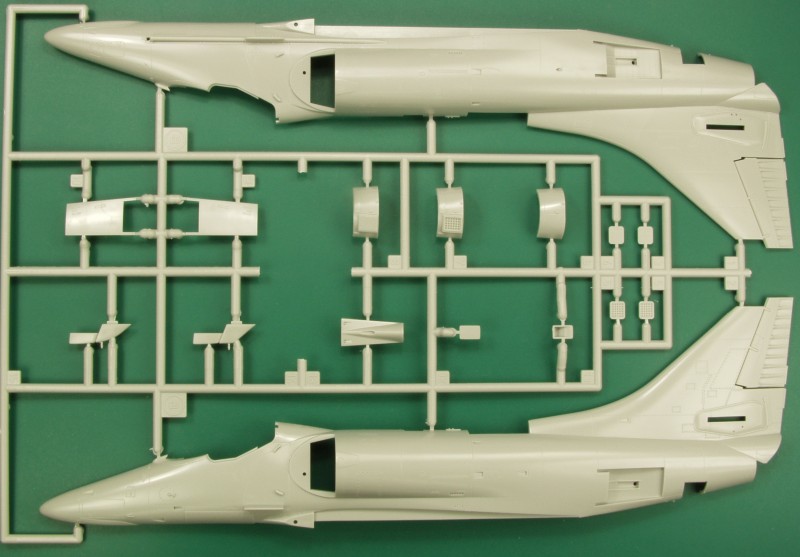
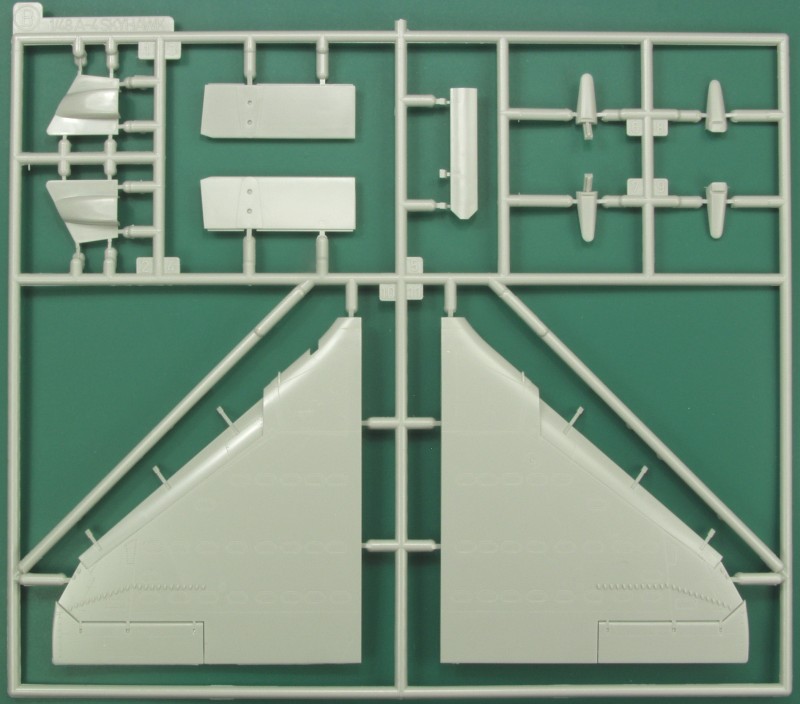
The nice level of detail in the main gear bays can be seen in the next photo, it will require some delicate painting to highlight it.
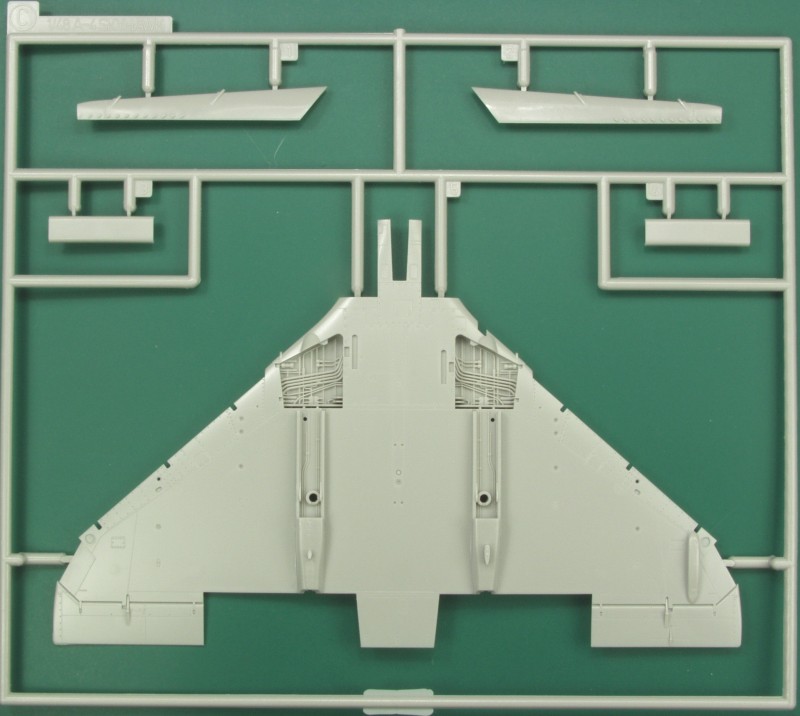
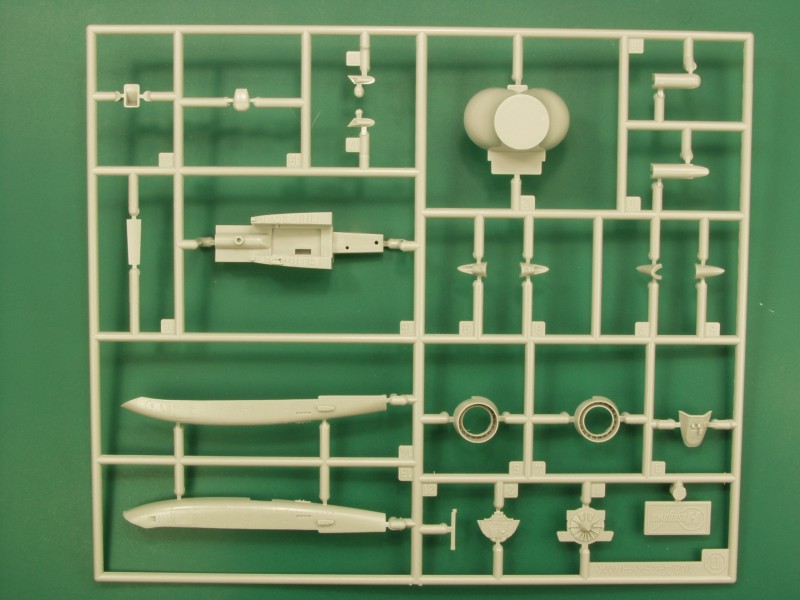
Difficult to see even close up but the side console raised detail is quite nice.
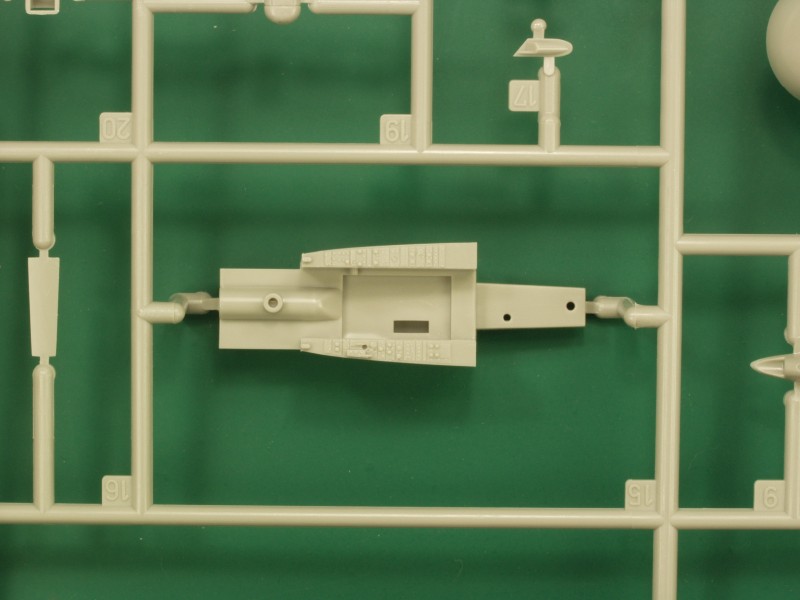
A boarding ladder is supplied if desired.
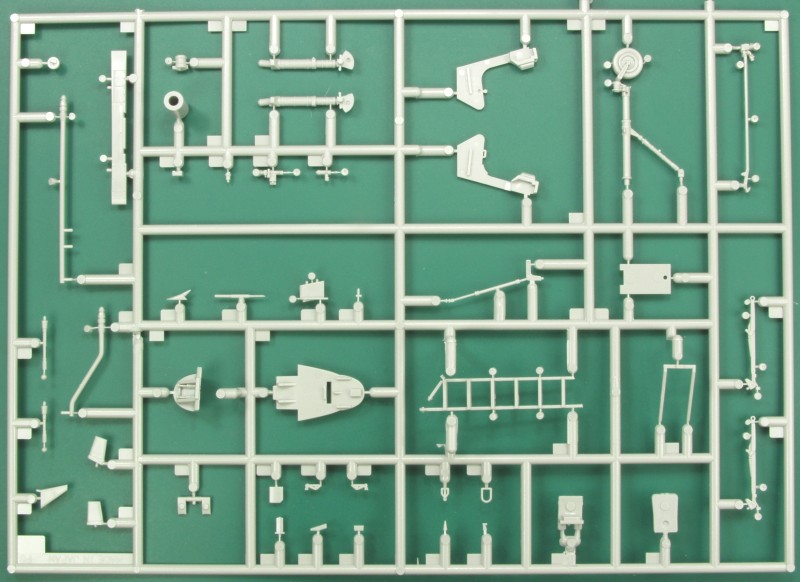
There are two of the next sprue.
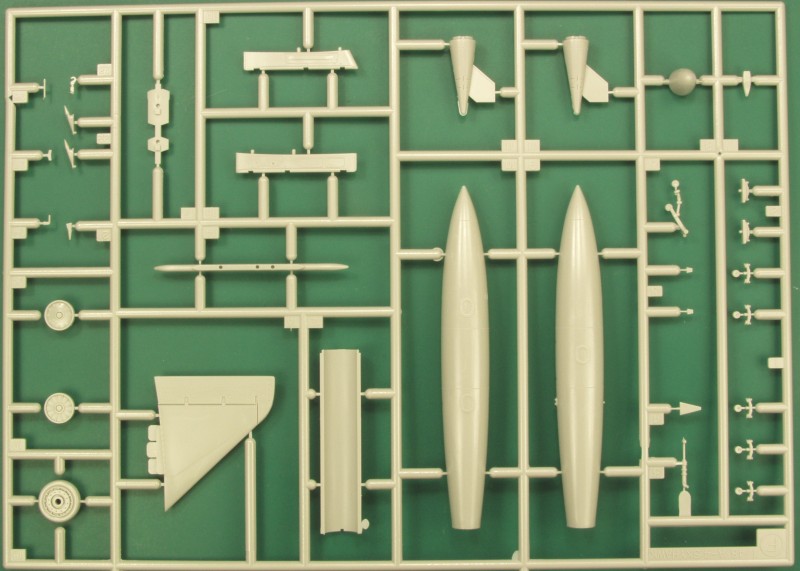
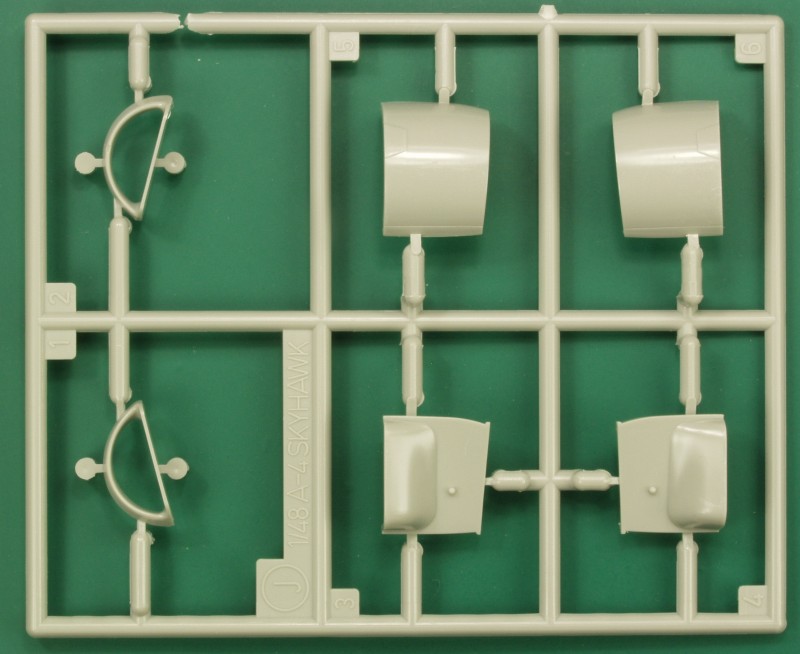
The clear parts are are thin and clear but have a fair amount of optical distortion. The canopy can be displayed open or closed.
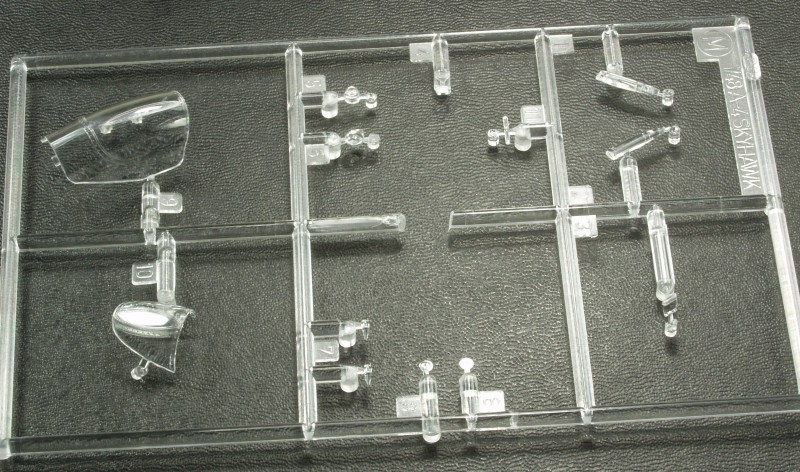
The decals are in register and quite opaque as well as being a bit thick, typical of most of the Japanese produced decals, at least the white is white and not the cream color that Hasegawa used for years. The sheet features quite a few stencil markings. It has marking for two aircraft; an E from VA-192, the commanders aircraft from the U.S.S. Ticonderoga and an F from VA-22, the commanders aircraft from the U.S.S. Bon Homme Richard.
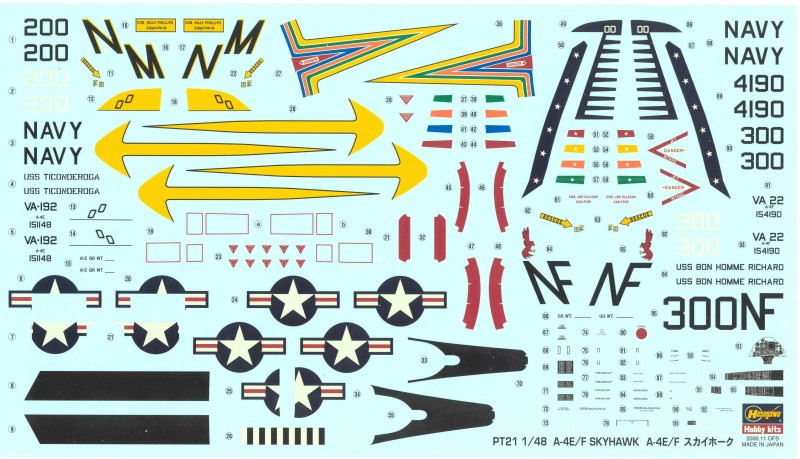
The instructions are the fold out style which creates 8 A4 sized panels. The first has history and aircraft specifications, the second has an icon chart then starts the assembly diagrams which continue on the next two with a total of 13 steps. Following that is a panel with a parts map and paint chart with colors called out by generic names and Gunze numbers. Two panels are devoted to painting and marking diagrams and the last panel has the usual generic assembly and decal instructions and safety warnings.
After Market Goodies
I ordered this wheel set before I got the kit and after seeing the kit parts I don't think they offer that much greater level of detail over the kit parts other than providing a separate nose wheel and fork which I suspect will be very delicate. The set is from Eduard, one of their Brassin series (648214). They are nicely molded and my set had no visible surface defects.
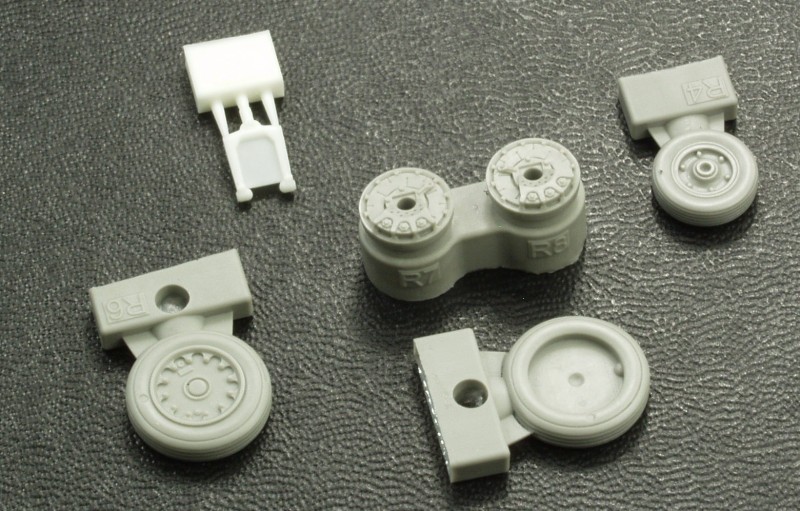
Another set ordered ahead of getting the kit, yes the parts add a level of detail but how often do you look up the tail pipe ? Again from Eduard from their Brassin series (648215). They are nicely molded and my set had no visible surface defects.
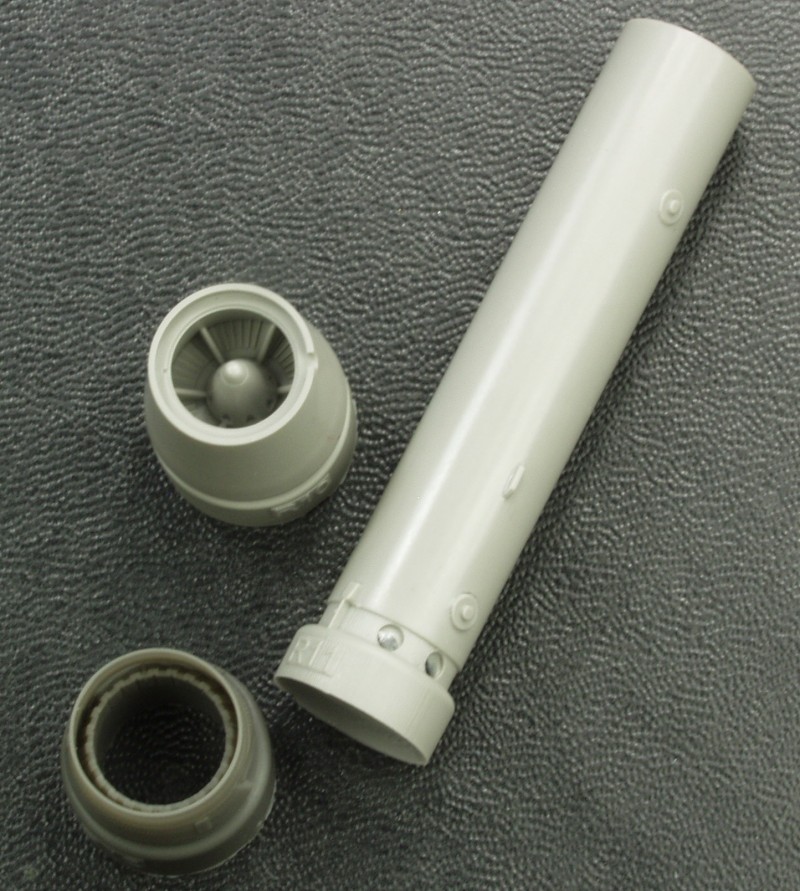
For a list of other aftermarket items for the kit, look here.
Conclusions
This is a very nicely done kit with lots of nice detail. Careful painting will be required if you don't want to lose some of the surface detail. Most reviews indicate that the fit is generally good but there are some places where some care and filling may be required so it's best tackled by some with at least some experience.
Links to kit build or reviews
A build / review can be found here and here
References
Wikipedia